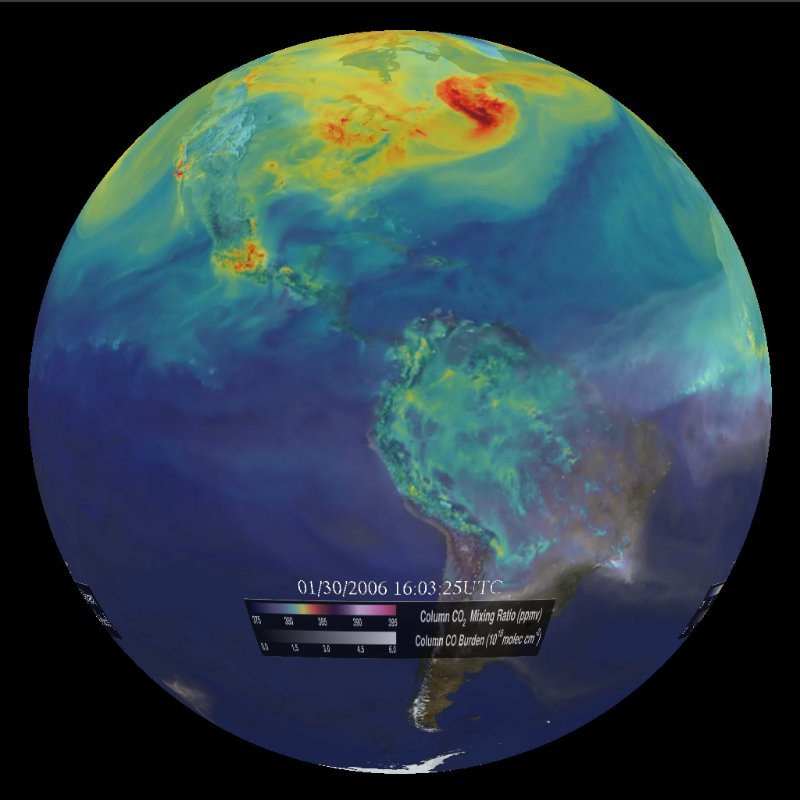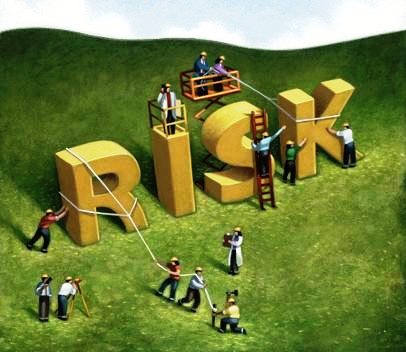| General President | Immediate Past General President |
Dr. Sarjerao Bhaurao Nimse,
Vice-Chancellor,
University of Lucknow,
Lucknow-226 007. | Prof. Dr. Ranbir Chander Sobti,
Vice-Chancellor,
Babasaheb Bhimrao Ambedkar
University (A Central University),
Vidya Vihar,
Rai Bareilly Road,
Lucknow-226 025. |
| General President (Elect) | General Secretary (Membership Affairs) |
Dr. Ashok Kumar Saxena,
Sir Asutosh Mukherjee Fellow (ISCA) and Former Emeritus Fellow U.G.C., New Delhi;
Department of Zoology, D.A.V.College, Kanpur; Former Dean,
Faculty of Science, C.S.J.M.University, Kanpur; Principal, D.A.V.College, Kanpur;7/182, Swarup Nagar,
Kanpur-208 002, U.P. | Dr. Nilangshu Bhusan Basu,
Principal Chief Engineer (C) & C.M.E.
(P & D),The Kolkata Municipal
Corporation,
7A, Tinkari Ghosh Lane, Kalighat,
Kolkata-700 026 |
| General Secretary (Scientific Activities) | Treasurer |
Prof. Arun Kumar,
Department of Earth Sciences,
Manipur University,
Canchipur,
Imphal-795 003, Manipur. | Prof. Dhyanendra Kumar,
Professor & Head,
P.G.Department of Zoology,
V.K.S.University,
Arrah-802 301 (Bihar). |
| Elected Members of the Executive Committee |
Dr.(Mrs.) Vijay Laxmi Saxena,
Coordinator-Bioinformatics
Infrastructure Facility Centre of DBT
(Govt. of India);
Head of the Department of Zoology,
Dayanand Girls P.G. College, Kanpur;
7/182, Swarup Nagar,
Kanpur-208 002 (U.P.). | Mr.Gauravendra Swarup,
Secretary, Dr.Virendra Swarup
Academic Society,
Joint Secretary, Dr.Virendra Swarup
Educational Foundation,
15/96, Civil Lines,
Kanpur-208 001. |
Prof. S. S. Katiyar,
Chairman, U.P. State Council for Higher Education,
Lucknow; Formerly Vice-Chancellor, Chhatrapati Shahu Ji Maharaj University,Kanpur,
Vice Chancellor, C.A.University of Agriculture and Technology,Kanpur,
Founder Director, Dr.Ram Manohar Lohia National Law University, Lucknow,
President, Association of Indian Universities, New Delhi; 7/111-E, Swaroop Nagar,
Kanpur-208 002 (U.P.). | Prof. Gangadhar,
Syndicate Member, Bangalore
University, Bangalore; Advisor
Trustee, BTL., Educational Trust for
Rural Development,
No. 59, III Main, I Cross,
Income Tax Layout,Vijayanagar,
Bangalore-560 040. |
Prof. R. Ramamurthi,
INSA Hony. Scientist,
Formerly Vice Chancellor, Sri
Venkateswara University;
A-9, Vaikuntapuram, M.R.Palli,
Tirupati-517 502, A.P. | Dr. Manju Tembhre,
Principal,
M.K.Ponda College of Business &
Management, Bhopal,
52, M.L.A.Colony,Jawahar Chowk,
Bhopal-462 003, M.P. |
Prof. Ranjit Kumar Verma,
Pro Vice-Chancellor,
Patna University,
Patna-800 005. | Dr. Achyuta Samanta,
Founder – KIIT & KISS,
KIIT University,
At. / P.O. KIIT, Patia,
Bhubaneswar-751 024, Odisha. |
Prof. D. Narayana Rao,
Director – Research,
SRM University,
Kattankulathur-603 203,
Dt. Kancheepuram, Tamil Nadu. | Prof. Aditya Shastri,
Vice-Chancellor,
Banasthali Vidyapith,
P.O. Banasthali Vidyapith-304 022,
Rajasthan. |
| Representative of Department of Science & Technology, Government of India |
Dr. Praveer Asthana,
Ministry of Science & Technology,
Department of Science & Technology,
Technology Bhavan,
New Mehrauli Road,
New Delhi-110 016. | |
| Local Secretaries |
Dr. Naresh Chandra,
Pro-Vice-Chancellor,
University of Mumbai,Fort,
Mumbai-400 032. | Prin.Dr. Rajpal S. Hande,
Director,
Board of College and University
Development (BCUD),
University of Mumbai, Fort,
Mumbai-400 032 |
| Past General Presidents |
Prof. M. S. Swaminathan
Founder Chairman,
M.S.Swaminathan Research
Foundation,
3rd Cross Street,
Taramani Institutional Area,
Chennai-600 113. | Prof. A. K. Sharma
Centre for Advanced Study in
Cell and Chromosome Research,
University College of Science,
35, Ballygunge Circular Road,
Kolkata-700 019. |
Prof. M. G. K. Menon
K – 5 (Rear), Hauz Khas Enclave,
New Delhi-110 016. | Prof. R. P. Bambah
1275, Sector 19B,
Chandigarh-160 019 |
Prof. C. N. R. Rao
National Research Professor and Honorary President &
Linus Pauling Research Professor,
Jawaharlal Nehru Centre for
Advanced Scientific Research,
Jakkur P.O.,
Bangalore-560 064. | Prof. Yash Pal
11-B Super Deluxe Flats,
Sector 15-A,
Noida-201 301. |
Prof. D. K. Sinha
Formerly Sir Rash Behari Ghose Professor of Applied Mathematics,
University of Calcutta,
69/A, Ekdalia Road,
Kolkata-700 019. | Dr. Vasant Gowariker
I-101, Vanaraji Heights,
Rambaug Colony,
Near MIT College,
Paud Road, Kothrud,
Pune-411 038. |
Dr. S. Z. Qasim
Centre for Ocean and Environmental Studies (COES),
A-2 (Basement), East of Kailash,
New Delhi-110 065. | Prof. P. N. Srivastava
Professor Emeritus,
Jawaharlal Nehru University, New Delhi,
163, National Media Centre,
National Highway No.8, Nathupur,
Gurgaon-122 002, Haryana. |
Dr. S. C. Pakrashi
INSA Honorary Scientist and Former
Director of Indian Institute of Chemical
Biology & CSIR Distinguished Fellow
“Meghamallar”,
Flat No.8F/2,
18/3, Gariahat Road,
Kolkata-700 019. | Prof. U. R. Rao
Chairman, PRL Council, ISRO-DOS,
Department of Space,
Antariksh Bhavan,
New BEL Road,
Bangalore-560 231. |
Prof. S. K. Joshi
Room No.250,
National Physical Laboratory,
Dr.K.S.Krishnan Marg,
New Delhi-110 012. | Dr. P. Rama Rao
Chairman, Governing Council,
International Advanced Research
Centre for Powder Metallurgy and New Materials (ARCI),
Balapur P.O.,
Hyderabad-500 005. |
Dr.(Mrs.) Manju Sharma
Former Secretary to the Govt. of India,
Dept. of Biotechnology;
B9/6476 (FF), Vasant Kunj,
New Delhi-110 070. | Dr. R. A. Mashelkar
National Research Professor &
President, Global Research Alliance,
CSIR-National Chemical Laboratory,
Dr.Homi Bhabha Road,
Pune-411 008. |
Dr. R. S. Paroda
Chairman,
Trust for Advancement of
Agricultural Sciences (TAAS),
Avenue II,
IARI, Pusa Campus,
New Delhi-110 012. | Dr. K. Kasturirangan
Member (Science),
Room No.119,
Planning Commission, Govt. of India,
Yojana Bhavan,
Sansad Marg,
New Delhi-110 001. |
Prof. Asis Datta
Professor Eminence,
National Institute of Plant
Genome Research,
Aruna Asaf Ali Marg,
J.N.U.Campus,
New Delhi-110 067. | Prof. N. K. Ganguly
Former Director General, ICMR,
Distinguished Biotechnology Research
Professor, Deptt. of Biotechnology,
C/o National Institute of Immunology,
Aruna Asaf Ali Marg,
New Delhi-110 067 |
Prof. Harsh Gupta
Member,
National Disaster Management
Authority, Government of India,
NDMA Bhawan,
A-1, Safdarjung Enclave,
New Delhi-110 029. | Dr. T. Ramasami
Secretary to the Government of India,
Department of Science & Technology,
Technology Bhavan,
New Mehrauli Road,
New Delhi-110 016. |
Dr. G. Madhavan Nair
Manjary Temple Road,
Sasthamangalam,
Trivandrum-695 010. | Prof. K. C. Pandey
Department of Zoology,
Lucknow University, Lucknow;
B1-240-A, Sector G,
Jankipuram,
Lucknow |
Prof. Geetha Bali
Former Vice-Chancellor, Karnataka
State Women’s University, Bijapur;
10, Sterling Southend Apartment,
30th Cross, Jayanagar,
VII Block,
Bangalore-560 082, Karnataka. | Dr. Manmohan Singh,
Hon’ble Prime Minister of India. |
| Past General Secretaries |
Dr.(Miss) Shashi Prabha Arya
90, Saakshara Apartments,
A-3 Block, Paschim Vihar,
New Delhi-110 063. | Prof. H. P. Tiwari
389, Mumfordganj,
Allahabad-211 002. |
Prof. S. P. Mukherjee
IAPQR,
AD-276, Salt Lake City,
Kolkata-700 064. | Dr.(Mrs.) Yogini Pathak
C/o Vihang Pathak,
403-404, Kush Flats,
Dhaibar Colony-16,
Opposite Polo Club,
Bagikhana Road,
Vadodara-390 001, Gujarat. |
Prof. Uma Kant
Former Head, Department of Botany &
Director, School of Life Sciences,
University of Rajasthan, Jaipu
“Kant Kottage”,
Sector-5, JHA-14,
Jawahar Nagar,
Jaipur-302 004. | Prof. B. Satyanarayana
Formerly Chairman & Vice-President,
Andhra Pradesh State Council of
Science & Technology;
1-8-702/62/17, Behind Shankar Mutt,
Nallakunta,
Hyderabad-500 044. |
Prof. B. P. Chatterjee
Emeritus Professor,
West Bengal University of Technology,
Sector – I, BF - 142,
Salt Lake,
Kolkata-700 064. | Prof. S. P. Singh
Professor Emeritus,
Department of Chemistry,
Kurukshetra University,
Kurukshetra-136 119, Haryana. |
Prof. Avijit Banerji
Professor (Retired) and Former
Programme Co-ordinator,
CAS Department of Chemistry,
University of Calcutta, Kolkata;
83, Sarat Bose Road,
Kolkata-700 026. | Dr. Manoj Kumar Chakrabarti,
Deputy Director (Senior Grade) & Head, Division of Pathophysiology,
National Institute of Cholera and
Enteric Diseases (ICMR),
P-33, C.I.T. Road, Scheme XM,
Beliaghata,
Kolkata – 700 010. |
| Past Treasurer |
Dr. S. B. Mahato
Ex-Deputy Director and Emeritus
Scientist (CSIR), Indian Institute of
Chemical Biology, Kolkata;
B6/6, Iswar Chandra Niwas,
68/1, Bagmari Road,
Kolkata-700 054. | |
| Sectional Presidents |
Agriculture and Forestry Sciences
Dr. S. K. Mahapatra,
Principal Scientist,
National Bureau of Soil Survey and
Land Use Planning (I.C.A.R.),
Regional Centre,
IARI Campus,
New Delhi-110 012. | Animal, Veterinary and Fishery Sciences
Prof. M. K. Jyoti,
1738/F Sector,
Shivaji Chowk,
Nanak Nagar,
Jammu –180 004 (J & K). |
Anthropological and Behavioural Sciences (including Archaeology and Psychology & Educational Sciences and Military Sciences)
Prof. Dr. Anup Kumar Kapoor,
Professor,
Department of Anthropology,
University of Delhi,
Delhi-110 007. | Chemical Sciences
Prof. Anand Prakash Mishra,
Professor, Department of Chemistry,
Dr.H.S.Gour University
(Cenetral University),
Sagar-470 003, M.P. |
Earth System Sciences
Prof. Kanhaiya Lal Shrivastava,
Professor (Former Head),
Department of Geology,
Faculty of Science, New Campus,
Jai Narain Vyas University,
Jodhpur-342 005, Rajasthan. | Engineering Sciences
Prof. Atul Sitaram Padalkar,
Founder and Principal, Flora Institute
of Technology, Pune;
49/1, Khopi,
Near Khed-Shivapur Toll Plaza,
Off National Highway 4,
Pune-412 205. |
Environmental Sciences
Dr. Kashinath Bhattacharya,
Professor & Former Head,
Environmental Biology Lab.,
Department of Botany,
Viswa-Bharati University,
Santiniketan-731 235,
Dist. Birbhum, West Bengal. | Information and Communication Science & Technology (including Computer Sciences)
Prof. Aparajita Ojha,
Director,
Pt. Dwarka Prasad Mishra Indian
Institute of Information Technology,
Design & Manufacturing, Jabalpur and
Professor, Computer Science and
Engineering,
Dumna Airport Road,
Post – Khamaria,
Jabalpur-482 005. M.P. |
Materials Science
Dr. Arvind Kumar Saxena,
Outstanding Scientist & Director,
Defence Materials & Stores Research
& Development Establishment,
Defence R & D Organisation,
Govt. of India, Ministry of Defence,
P.O. : D.M.S.R.D.E.,
G.T.Road,
Kanpur-208 013. | Mathematical Sciences (including Statistics)
Prof. Ajay Kumar,
Dean Research (PS & MS),
Professor & Head,
Department of Mathematics,
University of Delhi,
Delhi-110 007. |
Medical Sciences (including Physiology)
Dr.(Mrs.) Shashi Bala Singh,
Director,
Defence Institute of Physiology
& Allied Sciences,
Defence Research & Development
Organisation, Ministry of Defence,
Government of India,
Lucknow Road,
Timarpur,
Delhi-110 054. | New Biology (including Biochemistry, Biophysics & Molecular Biology and Biotechnology)
Dr. Sib Sankar Roy,
Principal Scientist,
Cell Biology and Physiology Division,
Indian Institute of Chemical Biology,
4, Raja S.C.Mullick Road,
Jadavpur,
Kolkata-700 032. |
Physical Sciences
Dr. V. P. Mahadevan Pillai,
Professor and Head,
Department of Optoelectronics,
University of Kerala,
Kariavattom-695 581,
Thiruvananthapuram, Kerala. | Plant Sciences
Prof. Arun Kumar Pandey,
Professor, Department of Botany,
University of Delhi,
Delhi-110 007. |
| Elected Members of the Council |
Mrs. Kumkum Swarup,
Secretary,
Dr.Virendra Swarup Educational
Foundation,
15/96, Civil Lines,
Kanpur-208 002. | Dr. S. Ramakrishna,
Associate Professor,
Department of Zoology,
Jnanabharathi Campus,
Bangalore University,
Bengaluru-560 056, Karnataka. |
Prof. K. S. Rangappa,
Vice-Chancellor,
University of Mysore,
Mysore-570 005, Karnataka. | Dr. M. G. Ragunathan,
Assistant Professor, Department of
Advanced Zoology and Biotechnology,
Guru Nanak College,
Chennai-600 042. |
Prof. C. Muthamizhchelvan,
Director,
Faculty of Engineering and
Technology,
S.R.M.University,
Kattankulathur-603 203,
Dist. Kancheepuram, Tamil Nadu. | Dr. Abhaya Kumar Naik
Registrar,
National Institute of Science
Education and Research,
Institute of Physics Campus,
P.O. – Sainik School,
Bhubaneswar–751 005. |
Dr. Kamal Kumar Saxena
Associate Professor, Department of
Zoology and Co-ordinator,
IGNOU Study Centre,
Bareilly College,
Bareilly-243 005. | Prof. Sunil Prakash Trivedi,
Environmental Toxicology &
Bioremediation Laboratory (E.T.B.L.),
Department of Zoology,
University of Lucknow,
Lucknow-226 007, U.P. |
| Representative of The Kolkata Municipal Corporation |
Sri Anindya Karforma,
Director General,
Building Department,
The Kolkata Municipal Corporation,
Central Municipal Office Buildings,
5, S.N.Banerjee Road,
Kolkata-700 013. | |
| Editor-in-Chief of Everyman’s Science |
Dr. Ashok Kumar Saxena
Kanpur (Vide Sl.No. 3). | |
| Representative of Indian National Science Academy (INSA) Council |
Prof. J. P. Khurana,
Vice-President of the Academy and
Coordinator (UGC-SAP),
Deptt. of Plant Molecular Biology,
University of Delhi,
South Campus,
New Delhi-110 021. | |










